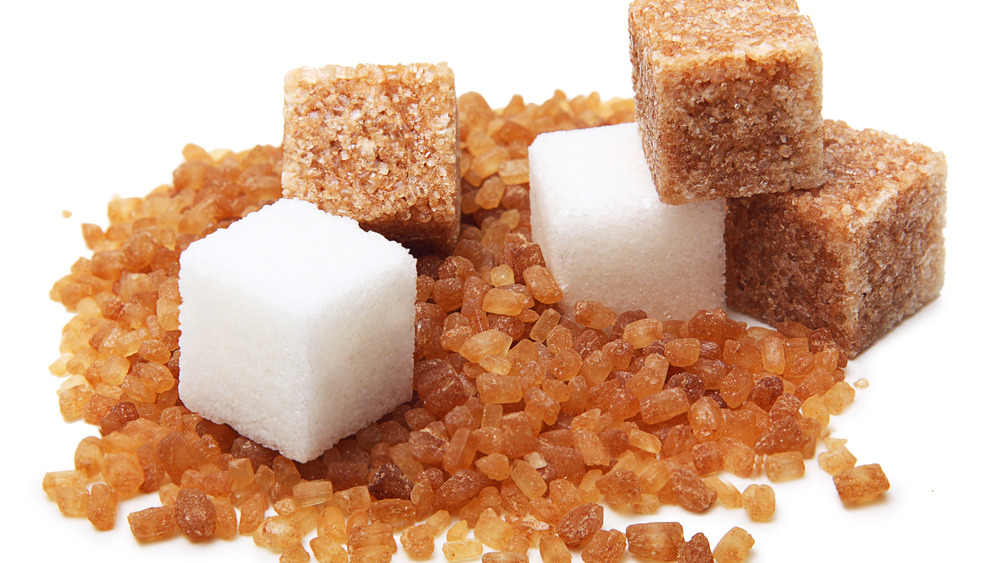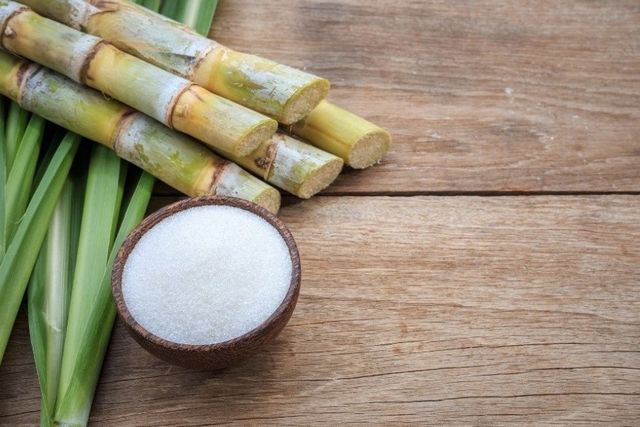Cane Sugar Processing: Cutting-edge Methods for High Quality Production
Cane Sugar Processing: Cutting-edge Methods for High Quality Production
Blog Article
An In-Depth Guide to the Environmental Impact and Sustainability Practices in Cane Sugar Handling
The environmental impact of walking cane sugar handling provides an intricate array of difficulties that warrant mindful exam. From dirt destruction and extreme water use to the carbon footprint connected with farming and production, the consequences of standard techniques are far-ranging. In comparison, the adoption of ingenious sustainability steps offers a pathway towards extra accountable production approaches. Recognizing the interplay in between these problems is important for stakeholders in the industry. What details methods can be carried out to strike an equilibrium in between efficiency and environmental stewardship? The responses depend on a more detailed check out both the obstacles and possible solutions.
Review of Walking Stick Sugar Processing
Cane sugar handling entails a collection of systematic actions that transform sugarcane into refined sugar. Originally, gathered sugarcane is transported to refining centers, where it goes through cleaning to get rid of dirt and particles. Following this, the walking cane is squashed to extract juice, which is after that made clear by getting rid of contaminations through home heating and the addition of lime.
The clarified juice undergoes evaporation, where water is removed to concentrate the sugar web content. These crystals are separated from the remaining syrup making use of centrifugation, resulting in raw sugar.
The last product is after that dried out and packaged for distribution. Throughout this entire process, keeping efficiency and quality control is vital to ensure the sugar satisfies market requirements. Each action in walking stick sugar processing not just adds to the end product but additionally has effects for resource use and waste generation, setting the phase for conversations on sustainability and environmental impacts related to sugar production.
Ecological Obstacles of Manufacturing
The manufacturing of cane sugar provides a number of considerable environmental obstacles that warrant interest. One main worry is the comprehensive use of agrochemicals, including pesticides and plant foods, which can lead to soil degradation, biodiversity loss, and contamination of local water resources. The overflow from sugarcane fields often lugs these chemicals right into neighboring communities, interrupting water life and impacting the wellness of communities reliant on these water bodies.
Another challenge is the high energy usage associated with sugarcane processing. The boiling and refining phases call for considerable warmth, mostly produced by shedding fossil fuels, adding to greenhouse gas discharges. In addition, the large land location required for sugarcane growing can bring about logging and habitat destruction, additional aggravating environment modification and threatening wildlife.
In addition, the labor practices in some areas increase ethical concerns, as workers might deal with poor working problems and poor incomes. This situation often bolsters a cycle of destitution in neighborhood neighborhoods. Cane Sugar Processing. Addressing these ecological difficulties is vital for establishing more sustainable techniques in walking cane sugar production, ultimately benefiting both the setting and the neighborhoods associated with this sector
Water and Land Use Effect
Water sources and land application are vital parts in the walking stick sugar sector that considerably influence the atmosphere. The farming of sugarcane requires considerable water input, with estimates recommending that it can take in up to 2,000 litres of water per kilogram of sugar generated. This extensive use water typically leads to depletion of local water sources, impacting not only the sugarcane vineyards however additionally surrounding communities and neighborhoods that rely upon the same water resources for agriculture and residential use.

Moreover, land usage for sugarcane growing can cause deforestation and the conversion of natural environments right into monoculture plantations. This method decreases biodiversity, disrupts regional communities, and adds to soil deterioration. The development of sugarcane fields typically intrudes on beneficial agricultural land, producing competition for resources in between food and biofuel production.
Lasting practices, such as optimizing watering strategies and carrying out crop turning, are necessary to minimize these effects. By taking on extra reliable water usage and land management strategies, the cane sugar sector can minimize its ecological impact, guaranteeing an equilibrium in between agricultural efficiency and ecological preservation.
Greenhouse Gas Emissions
Greenhouse gas discharges represent a significant environmental worry within the cane sugar processing sector, specifically as agricultural techniques increase to fulfill international demand. The growing of sugarcane, a plant that prospers in tropical climates, relies heavily on synthetic plant foods and chemicals, which add to laughing gas emissions. Additionally, land-use adjustments, including deforestation for brand-new sugarcane vineyards, release co2 saved in vegetation and dirt.
During processing, power usage is another major source of greenhouse gas emissions - Cane Sugar Processing. Many sugar mills make use of nonrenewable fuel go now sources to power machinery and produce heat, causing significant carbon footprints. Moreover, the transportation of raw sugarcane and ended up items adds layers of exhausts via gas burning in lorries
This involves examining current agricultural techniques, processing techniques, and transportation systems to determine areas for improvement and reduction. Attending to greenhouse gas emissions is necessary for promoting a more sustainable walking stick sugar industry in a changing climate.

Lasting Practices and Innovations
Sustainable techniques and advancements are increasingly essential in the walking stick sugar processing sector as stakeholders seek to reduce ecological impacts while preserving efficiency. One substantial innovation is the execution of incorporated plant administration, which maximizes resource use by incorporating soil management, parasite control, and crop turning methods. This strategy boosts yield while decreasing chemical inputs and protecting dirt health and wellness.
In addition, the fostering of renewable resource resources, such as biomass from sugarcane deposits, has actually acquired traction - Cane Sugar Processing. By converting waste products right into energy, refining facilities can lower their dependence on fossil fuels, thus decreasing greenhouse gas exhausts
Water monitoring techniques have actually also seen enhancements with the recycling and reusing of water in processing plants, dramatically lowering freshwater usage. Advancements in technology, such as accuracy farming, enable farmers to check crop wellness and source use a lot more efficiently, making certain sustainable growing techniques.
Moreover, accreditation programs like Fair Trade and Jungle Partnership encourage eco liable farming practices and advertise social equity within the supply chain. By accepting these sustainable techniques and developments, the walking stick sugar handling industry can boost its durability and add positively to ecological stewardship.
Conclusion
The ecological impact of walking stick sugar handling visit homepage presents substantial obstacles, including soil degradation, high water consumption, and greenhouse gas emissions, alongside honest worries connected to labor practices. Resolving these problems with lasting techniques, such as incorporated plant management, eco-friendly power fostering, and water recycling, is look these up crucial. By advertising socially equitable and environmentally accountable methods in sugar production, the market can mitigate its negative results, guaranteeing a more sustainable future for both neighborhoods and ecological communities involved in this field.
Walking stick sugar handling involves a collection of systematic actions that transform sugarcane right into refined sugar. Each step in walking cane sugar handling not only contributes to the last product yet also has implications for resource use and waste generation, setting the phase for conversations on sustainability and environmental effects linked with sugar production.
Greenhouse gas exhausts represent a significant environmental issue within the cane sugar processing market, specifically as agricultural techniques expand to satisfy worldwide need.Lasting practices and advancements are significantly crucial in the walking stick sugar processing industry as stakeholders seek to minimize ecological effects while maintaining efficiency.The environmental influence of cane sugar processing provides substantial difficulties, including soil deterioration, high water consumption, and greenhouse gas emissions, alongside moral worries related to labor techniques.
Report this page